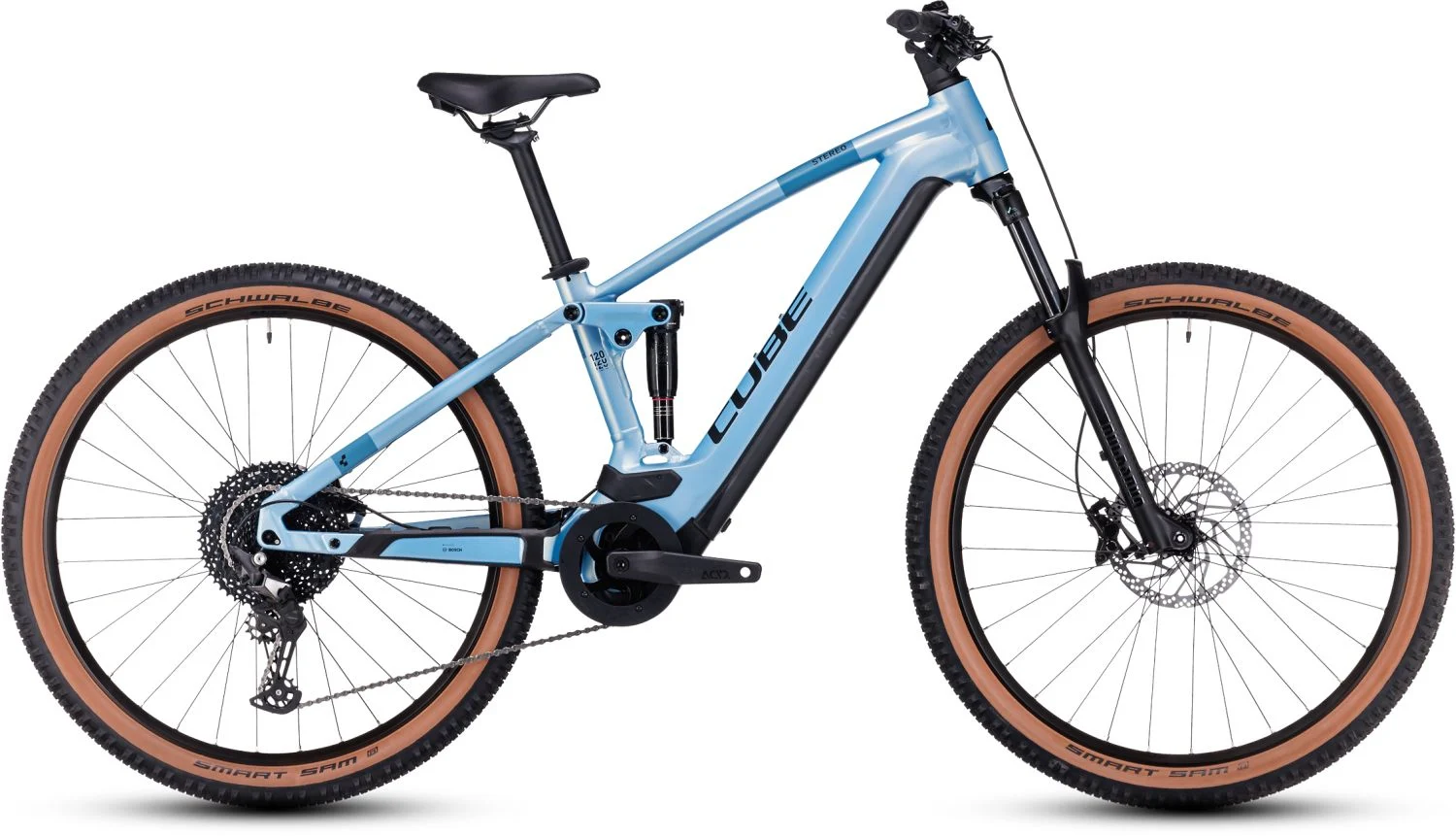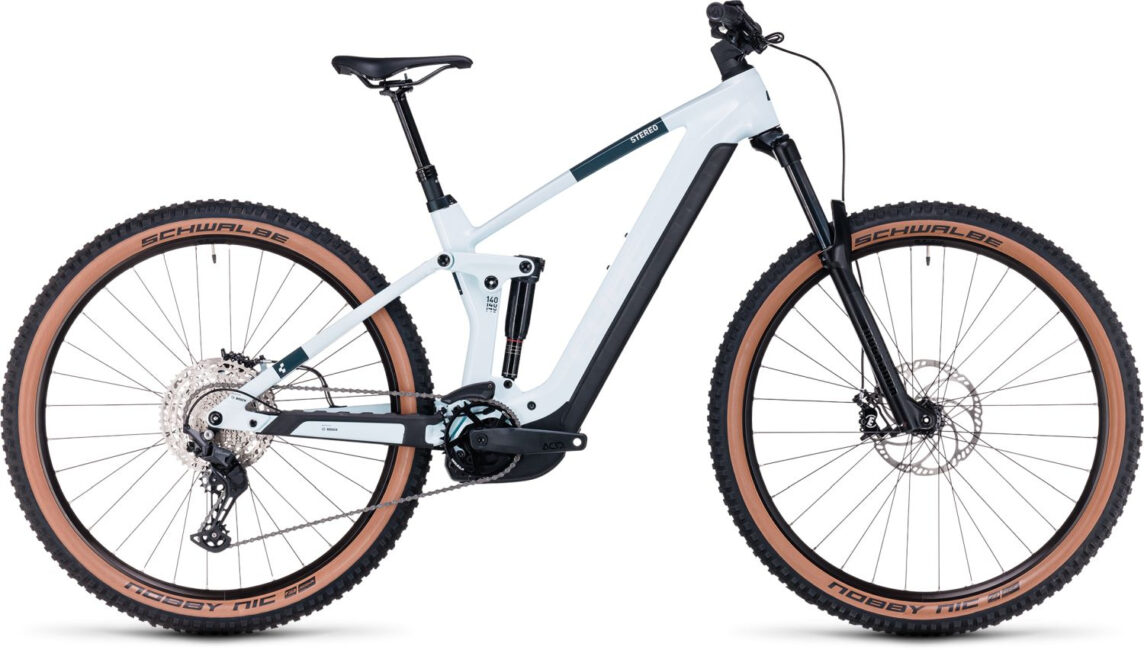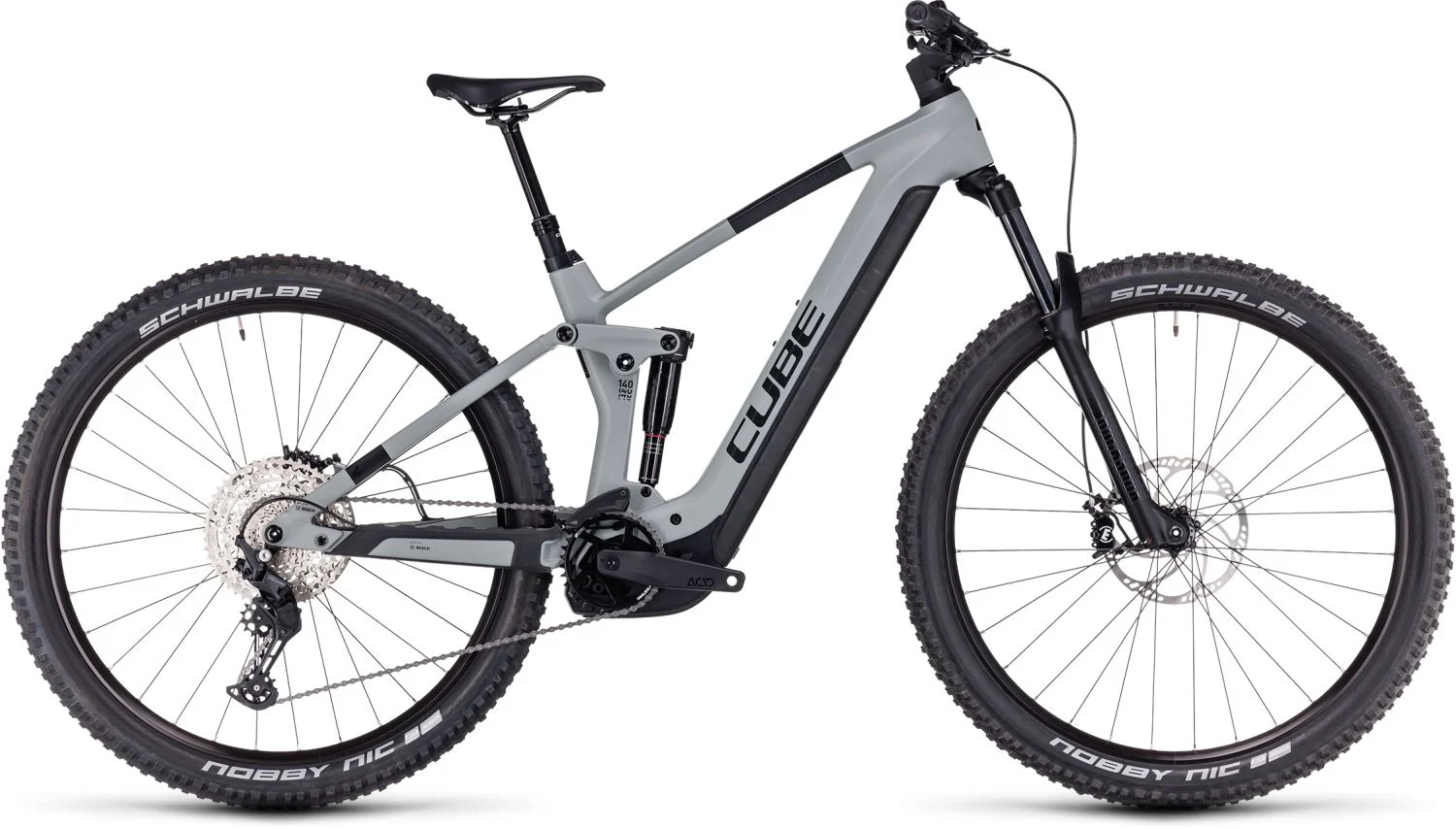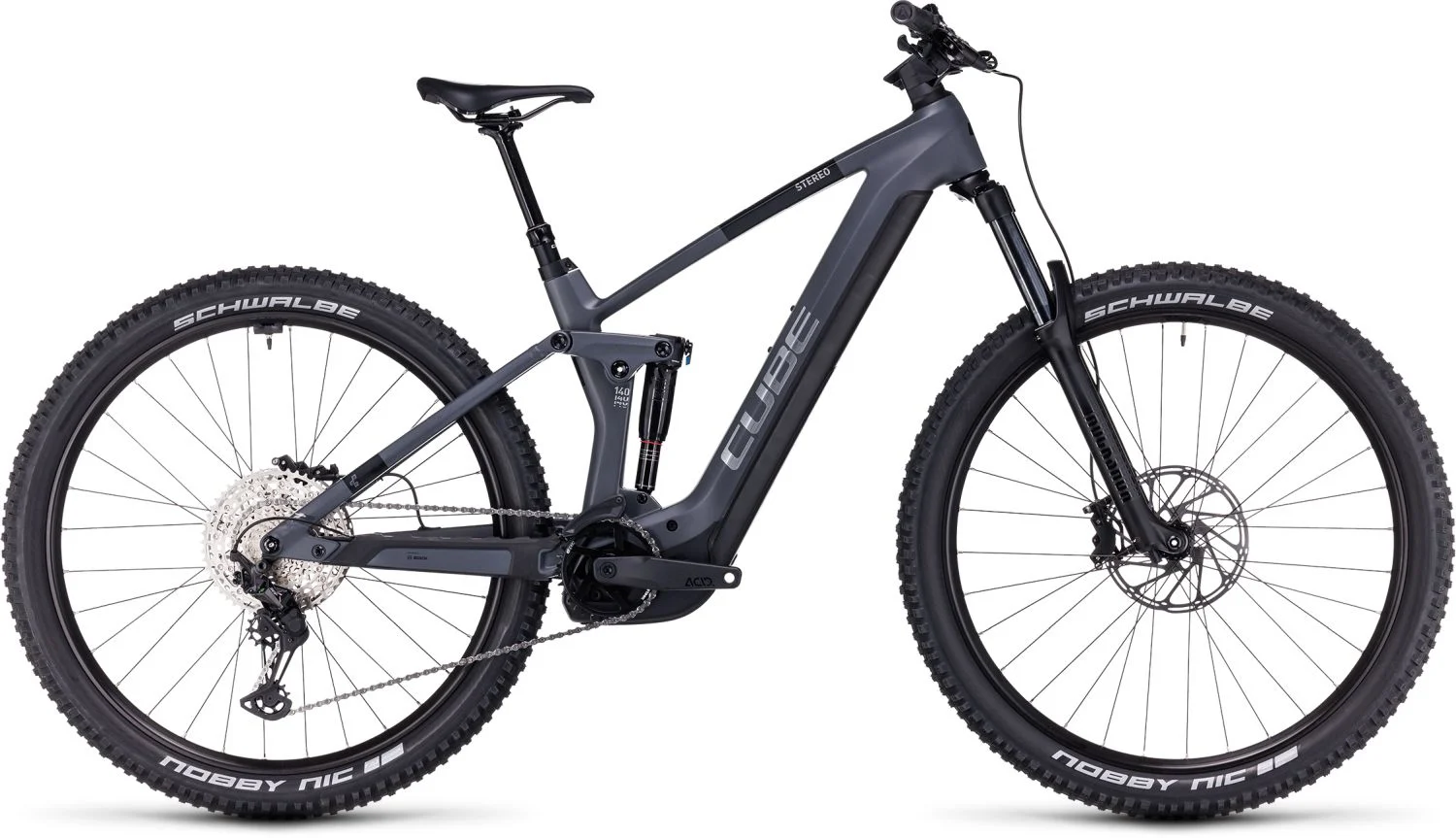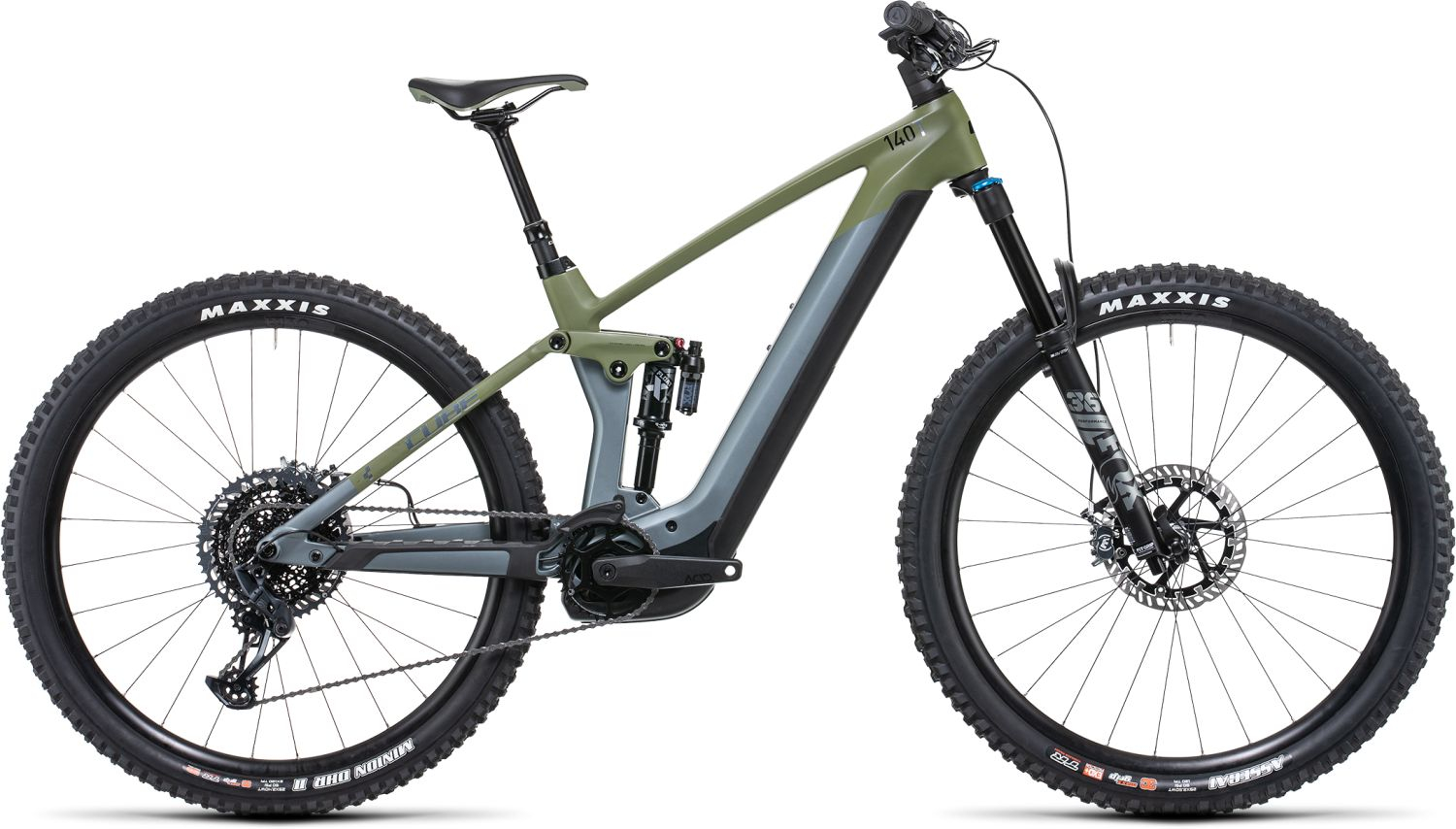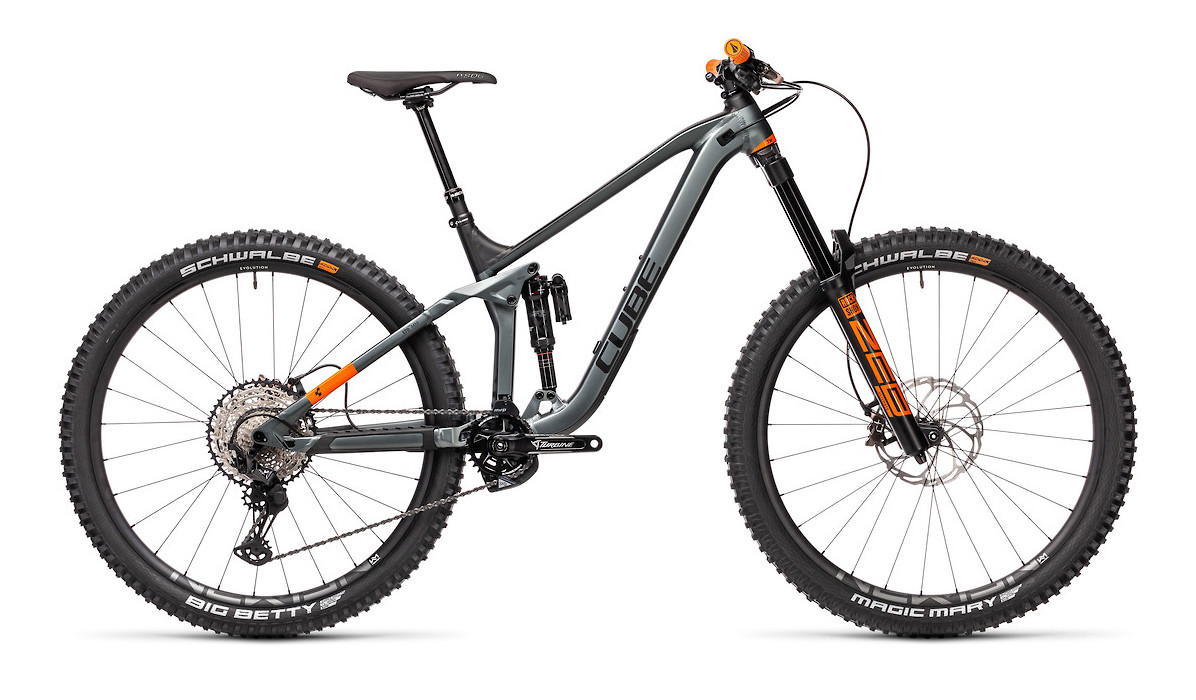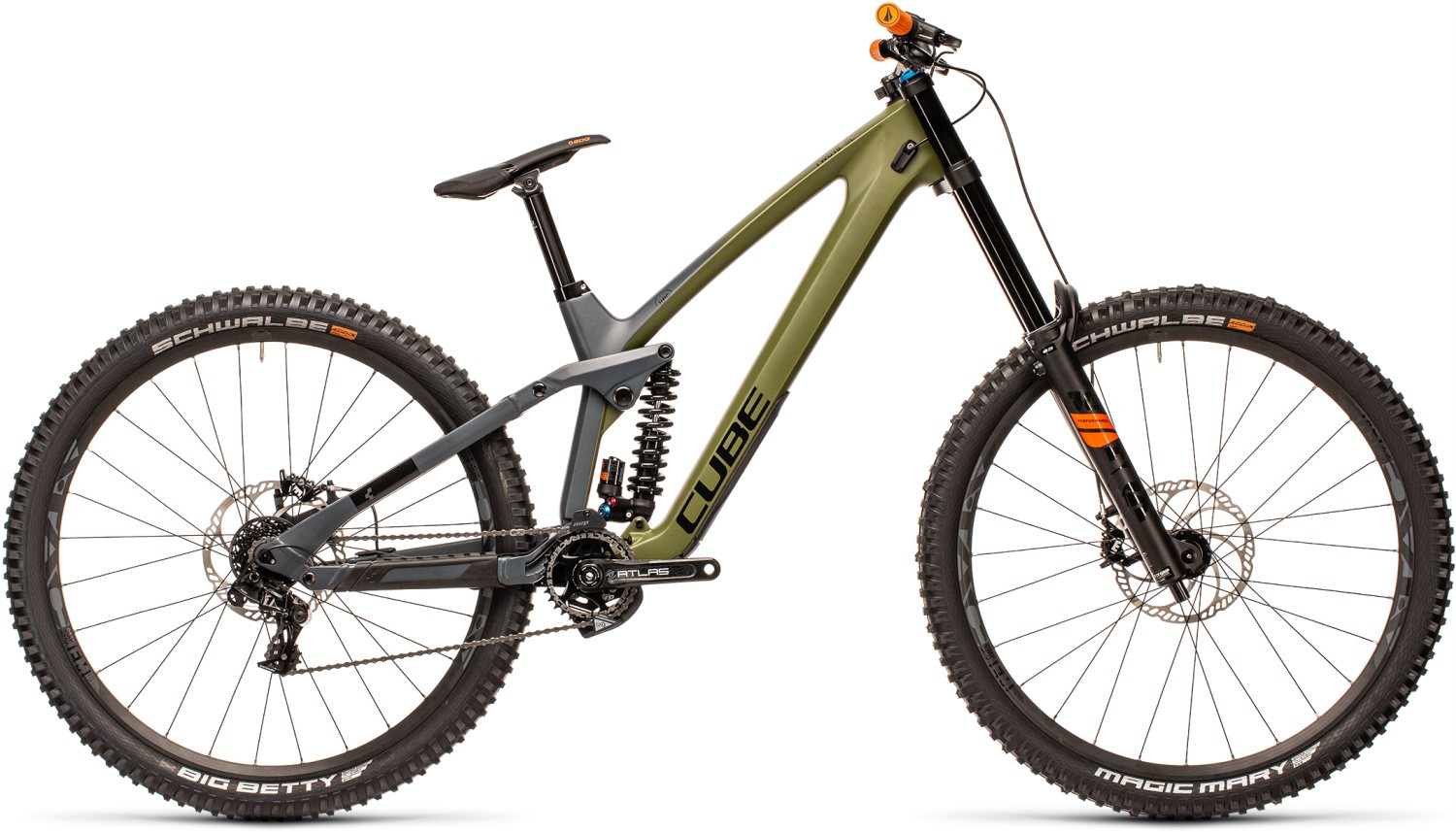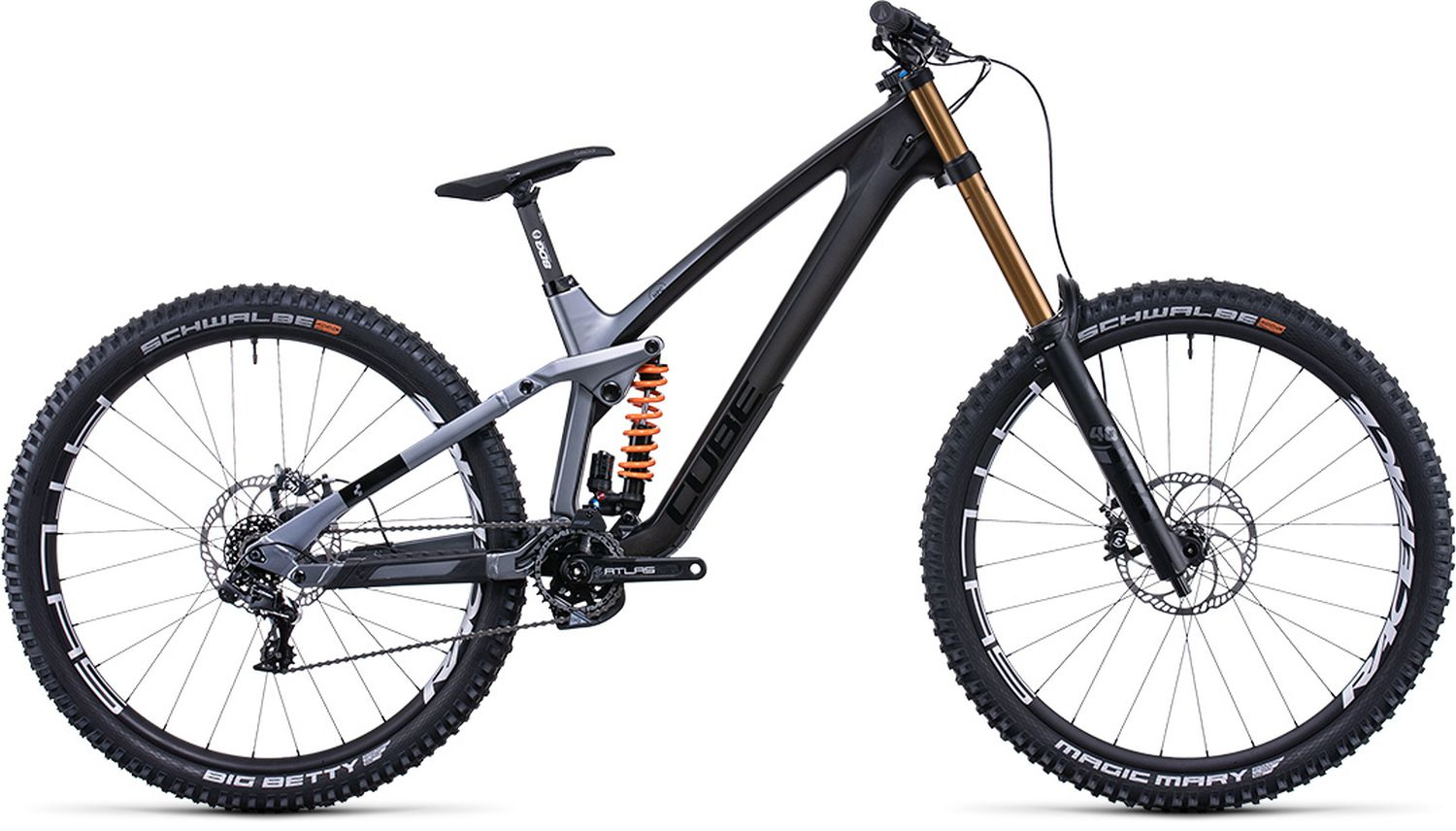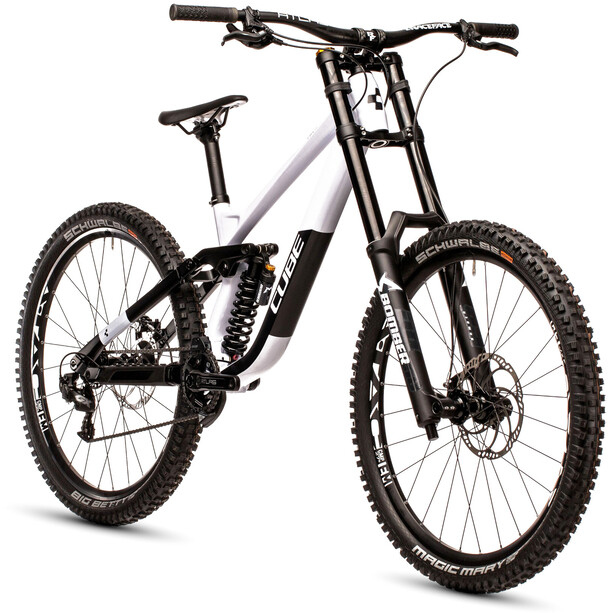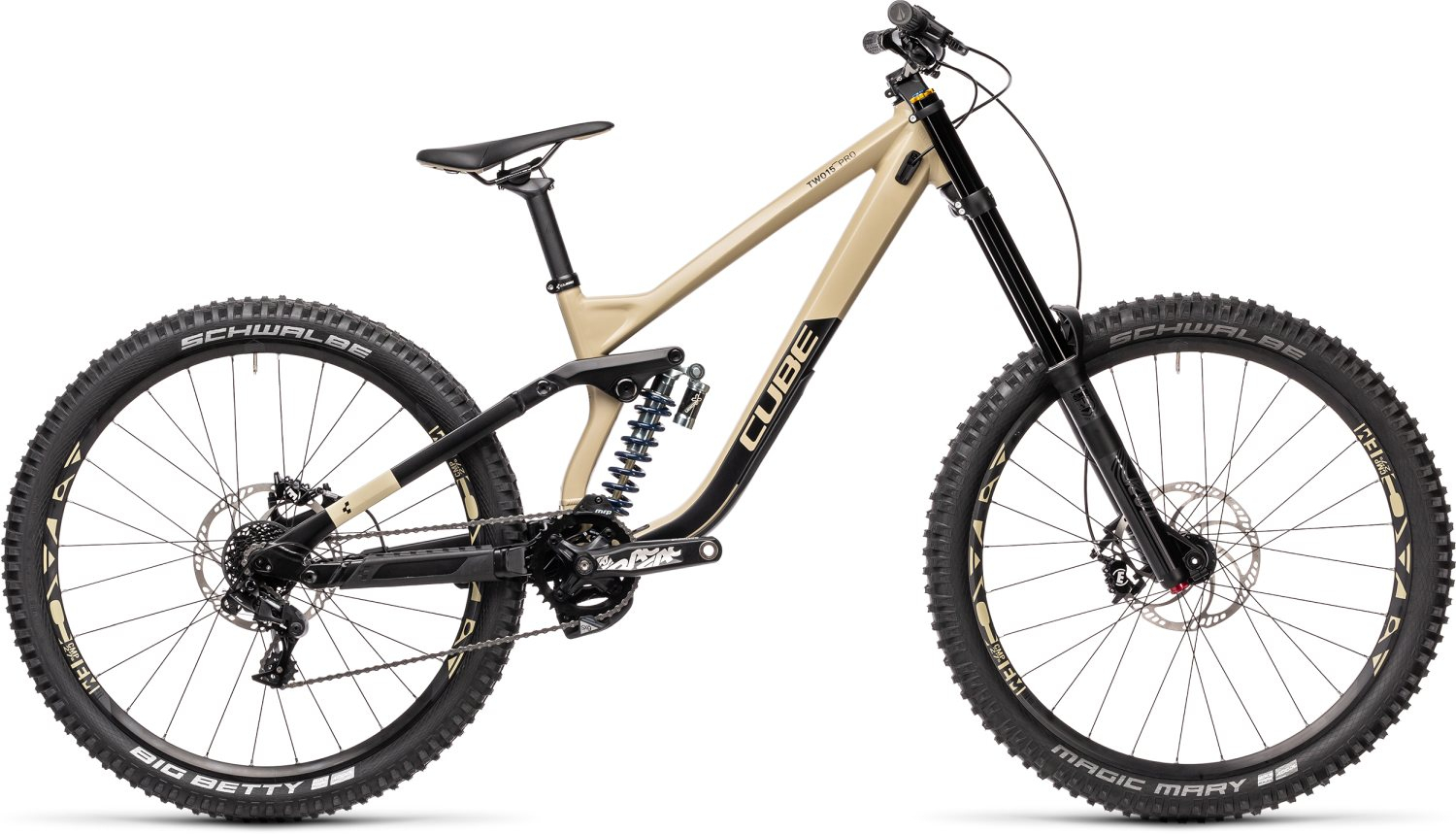-
- -15%
Cube Stereo Hybrid 120 Pro 750 | 2023
- Original price was: €4,100.€3,500Current price is: €3,500.
-
Cube Stereo 170 TM | 2021
- €3,550
-
CUBE TWO15 HPC SL 29 | 2022
- €3,900
-
Cube Two15 HPC SLT | 2022
- €6,000
- Total number of gears: 7 Weight (approx.): 15.9kg Travel (mm): 200 Braking system: Hydraulic disc brake Fork Travel (mm): 203mm
BUY CHEAP CUBE DOWNHILL BIKES ONLINE
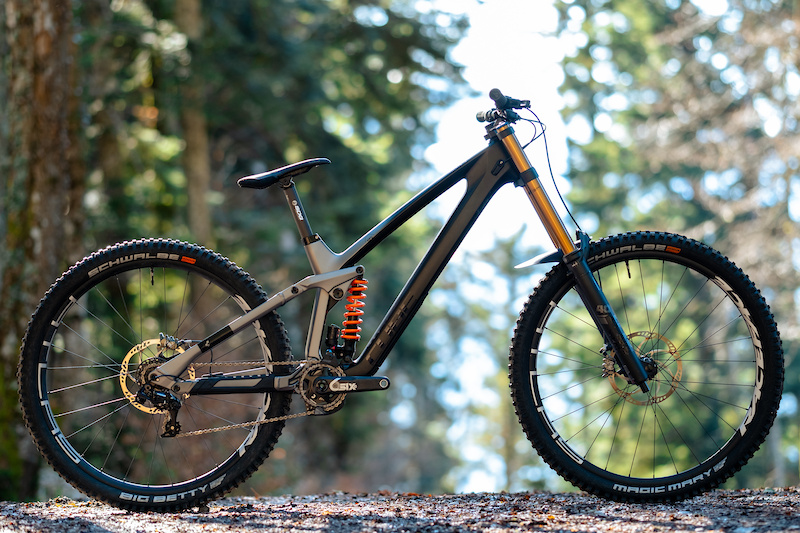
In order to provide you with the best possible support in your search for the right Cube downhill bikes, you will find answers to important questions here. If you need further advice, we will be happy to help you by e-mail ([email protected]).
APPLICATION AREA OF CUBE DOWNHILL BIKES
A downhill bike is obviously not appropriate as a mountain goat due to the substantial suspension travel, the flat steering angle, and the hard-rolling tyres. Therefore, even with Cube versions, one prefers the lift or shuttles upward. See Cube Mountain bikes for sale
Even though you don’t have to pedal downhill yourself, downhill riding is nonetheless exhausting: the most challenging routes and quick speeds raise your heart rate to the maximum limit, and lactate burns in your arms.
You obviously need a bike that can endure even the most violent impacts of such pressures and strains. The Cube downhill bikes are useful in this situation. They can easily defeat anything since they have the proper geometry and tools. The fact that Cube bikes can build the right bikes for this area of use is impressively proven by team riders Matt Walker and Greg Williamson in the UCI Downhill World Cup
CUBE DOWNHILL BIKES AT A GLANCE
- Extremely stable frame with flat steering angle
- massive 215mm travel at the rear and 200mm at the front
- potent steel spring elements
- Snappy four-piston disc brakes with 200mm (front) and 180mm (rear) brake discs
- 27.5” wheels
HOW MUCH SUSPENSION TRAVEL DO I NEED?

Because a downhill bike does not have to be pedaled downhill, the old adage “a lot helps a lot” applies, and this must have been the inspiration for the Cube downhill bikes. 200mm at the front and 215mm at the rear ensure not only a forgiving chassis but also a sense of immense safety.
Your Cube downhill bike will simply bounce over any obstacle, no matter how large. A low center of gravity also results in an extremely full riding experience. Despite the enormous smoothness, a compact rear triangle allows you to pull around every bend as fast as an arrow.
The Cube downhill bike, with 215mm of travel, prefers direct, aggressive lines. If you are looking for a little more playfulness and pop, for example with kickers or roots, a little less travel could also be right for you.
AIR OR STEEL SUSPENSION?
The debate over the two types of suspension is as old as both are available for purchase. Making a genuine recommendation is difficult.
However, the benefits of each system are clear. Air shocks are lighter in weight and can be adjusted to the rider’s weight by adjusting the air pressure. Steel spring dampers, on the other hand, have a very linear characteristic that results in a full-ride feel.
As a result, the wheels literally stick to the ground, providing unrivaled grip in any riding situation. However, because weight adjustment is only possible through spring stiffness, the entire steel spring must be replaced in the event of a change.
Titanium springs can be used to save weight if desired. These are lighter but significantly more expensive. Cube’s downhill bikes feature a powerful steel spring damper that is also highly customizable thanks to adjustable compression and rebound damping. Furthermore, the shock was given a custom tune that perfectly matches the frame’s kinematics. This makes the most of the frame.
THE RIGHT BRAKES
High speeds and abrupt braking manoeuvres pose great challenges for every bicycle brake. The problem here is the friction-related temperatures, which often cause the discs to glow.
However, if they get so hot, the brake pads glaze over, which in the worst case can lead to a total loss of braking power. To keep temperatures within an acceptable range, downhill bikes are equipped with massive brake discs. 200mm discs at the front are already standard.
At the rear, manufacturers vary between 180 and 200mm. Smaller discs are used for weight reasons, larger ones increase stability. Very heavy riders or beginners who are constantly on the brakes should opt for the large rotors.
Light riders, on the other hand, can also opt for smaller discs, such as those used by Cube. They have 200mm rotors at the front and 180mm rotors at the rear.
THE RIGHT WHEELS AND TIRES

Good downhill wheels have a long list of specifications: They have to be stiff, but light in weight. You need a wide rim base that should be insensitive to punctures.
And last but not least, they should have good rollover behavior while still being very durable. Based on these considerations, the 27.5” wheel standard has already established itself on downhill bikes.
Modern manufacturing processes make it possible to make even the larger wheels stable. The lack of stability was the reason for using 26″ wheels in the old days. Of course, Cube also relies on the modern standard and does not skimp on non-slip tires. You certainly don’t want to pedal the Magic Mary from Schwalbe uphill,
THE RIGHT SIZE
Of course, the frame size must first and foremost fit your own body size. Nevertheless, it can also be adapted to your own riding habits and preferences.
If you like it fast, love direct lines and are simply looking for maximum smoothness, then you can go for a slightly larger and thus longer frame.
The extra wheelbase and reach give you a fuller feeling. If you prefer a playful and agile bike, it’s best to go for the right frame size.
Cube offers its downhill bikes in three different sizes: 16, 18 and 20 inches. With a reach that goes from 395mm (16″) to 453mm (20″), an extremely wide range of riders will find the right frame. So everyone should find the right companion from Cube, almost regardless of their body size.



